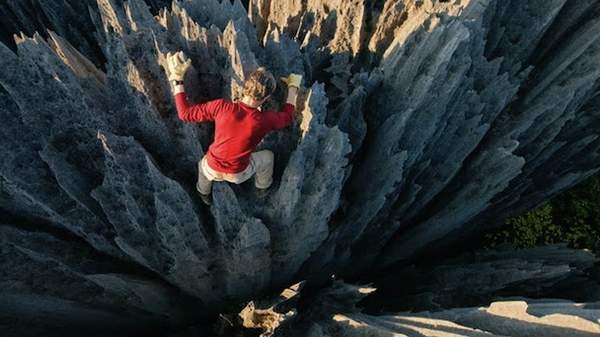Overview
A quick search through magazines and online will bring up hundreds of bucket lists suggesting the bright lights of Manhattan or the ancient ruins of Rome. However, for many people a city is a city, and to truly live and experience beauty one has to look further — much further.
Here's just a few of the world's hidden wonders.
1. Mount Roraima in Venezuela/Brazil/Guyana
Mount Roraima, the highest of the Pacaraima Mountains, is a massive tabletop plateau that spreads into three countries. Boasting a variety of plant life — such as pitcher plants, bellflowers and heather, some of which are unique — Roraima creates some of the most spectacular waterfalls in the world and has steep sides that reach over 400 metres in height. Popular with backpackers and hikers, who usually hire a guide from the village of Paraitepui below, the plateau has only one route up, a perilous ascent of near constant cloud cover and uncanny rock formations.
2. The Door to Hell in Turkmenistan
It's not strictly one of Mother Nature's greatest creations as mankind lent a hand in making it, but the locally dubbed Door to Hell in Turkmenistan is unlike anything else in the world. A giant hole in the ground with a never-ending supply of burning gas, the crater is around 60 metres across and easily just as deep. Supposedly formed in the '70s when geologists, drilling for natural gas, went too deep and caused a massive cave-in and explosion, the Door to Hell has been ablaze ever since, and may never go out.
3. Chocolate Hills in the Philippines
Formed, according to legend, by the tears of a giant that had lost his love, the Chocolate Hills appear on the provincial flag of Bohol and all stand between 30 and 50 metres high. A more reliable explanation for this unusual landscape could be that the hills were the result of the self-destruction of an active volcano. Mostly uniform in shape and size, the hills are covered in rich, green grass that turns brown during the dry season (hence the name). It's thought that there are as many as 1770 of these mysterious hills spread out over an area of 50 square kilometres.
4. Stone Forest in Madagascar
Home to many unique species, including the white lemur, which can be found in the passageways below as well as above, Madagascar's Stone Forest is filled with pillars of extensively eroded limestone that rise up to 70 metres above the ground. From the air, the area appears harsh and barren, but beneath the jagged peaks lies a world of forest canyons and humid caves, all teeming with plants and animals. The Stone Forest is known locally as 'Tsingy' (where one cannot walk barefoot). It's quite clear why.
5. Mount Sanqingshan National Park in China
Shrouded in mist for 200 days of the year, Sanqingshan National Park, which is considered a sacred place, is used by many for meditation and is believed to grant immortality. Home to about 2500 species of plant, the area's granite formations and strangely shaped pine trees resemble silhouettes of people and animals.
6. Socotra in Yemen
Considered to be the most biodiverse place in the Arabian Sea, world heritage site Socotra has some of the most unusual looking plant life in the world, including the distinct Dragon Blood Tree, mainly because of its harsh climate. Located within the Republic of Yemen, the group of islands are also home to a huge number of spiders, birds, and spectacular coral reefs. Socotra's main island has three different terrains: narrow coastal plains, a limestone plateau dotted with deep caves, and the Haghier Mountains, the tallest of which is 1503 metres high.
7. Devils Tower in the USA
According to Sioux Indian legend, a group of young girls were out picking flowers when they were suddenly chased by bears. Seeing and taking sympathy on their plight, the Great Spirit moved the ground beneath them and raised them to safety. The bears, who couldn't climb the rock's steep sides, fell, leaving scratches in their wake. The mysterious rock is sacred to a number of tribes, and during the month of June, when they conduct ceremonies around it, climbing is prohibited. The truth behind the formation of Devils Tower, located in Wyoming, has experts baffled. While many believe it is the neck of an extinct volcano, as evidenced by the surrounding landscape, others are sceptical. We may never really know.
8. The Eye of the Sahara in Mauritania
Used by shuttle crews as a landmark since the earliest days of space travel, the Eye of the Sahara, which has a diameter of 50 metres, resembles a giant bull's-eye in the desert or, to be more descriptive, the fossil of a giant ammonite. A true geological wonder, it was once thought the Richat Structure, as it is also known, was formed when a meteorite struck the earth. Nowadays experts believe it was formed by the constant lifting and erosion of the earth.
9. Dune of Pyla in France
Completely out of place in France, the Great Dune of Pyla, Europe's largest sand dune, is a popular hot spot for paragliders and holidaymakers. With a height of around 100 metres, the dune comes in from the coast and runs along 3 kilometres of coastline, with its steepest side facing a green forest beyond. A strange sight indeed.
10. Cano Cristales in Colombia
For most of the year, Cano Cristales, a river so remote it can only be reached by horse or on foot, is different to no other, littered with waterfalls, rapids, wells, and hollows, but for a brief period it transforms and earns its nickname, 'The River of Five Colours'. During the gap between the wet and dry seasons, a unique species of plant that lines the river floor suddenly appears to turn a brilliant red, which, along with yellow and green sand and blue water, turns the whole area into a vision of paradise.
